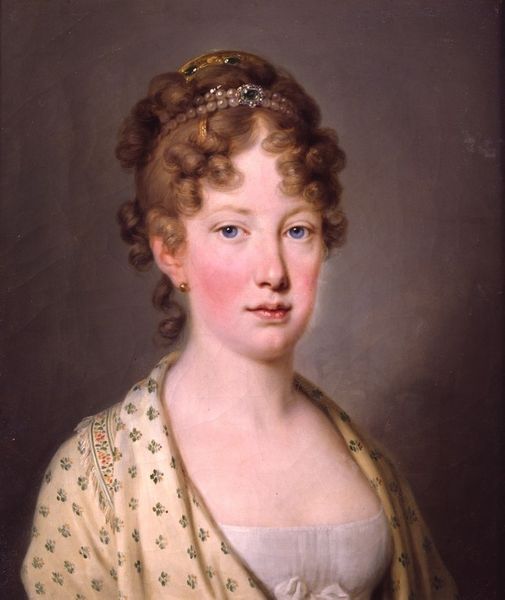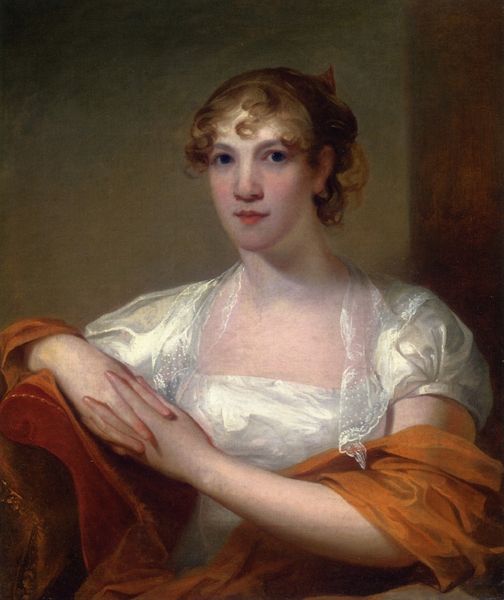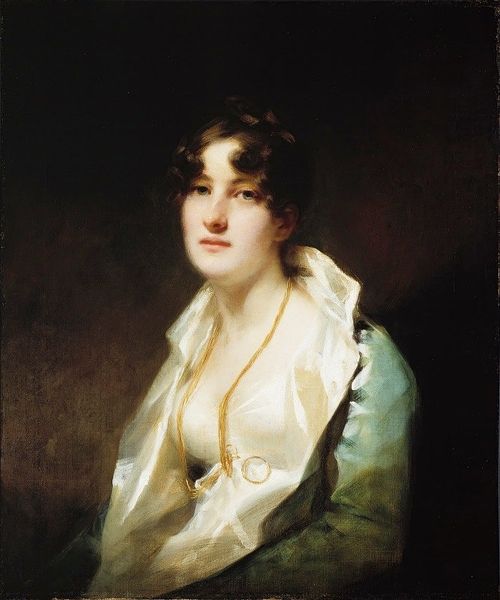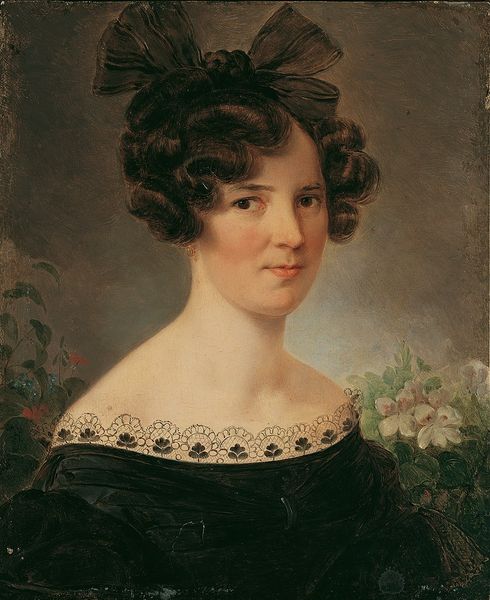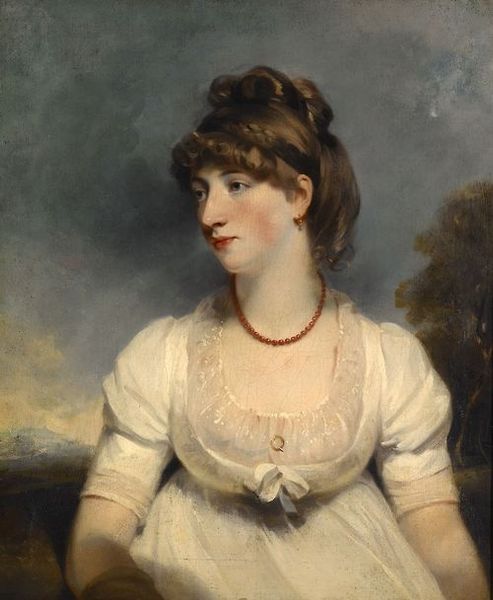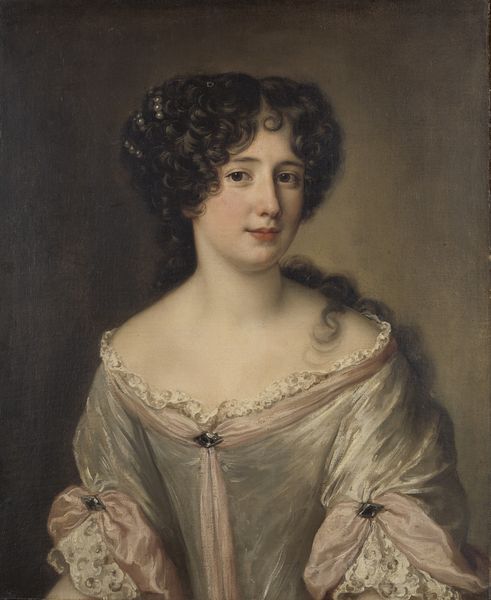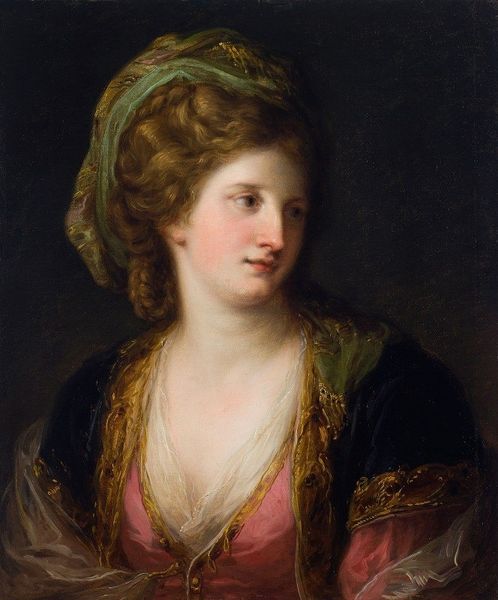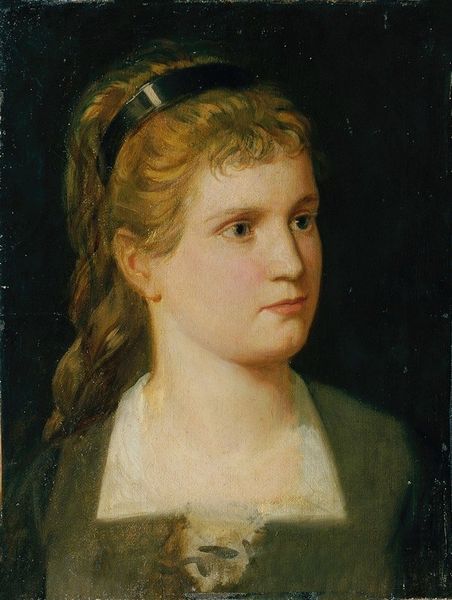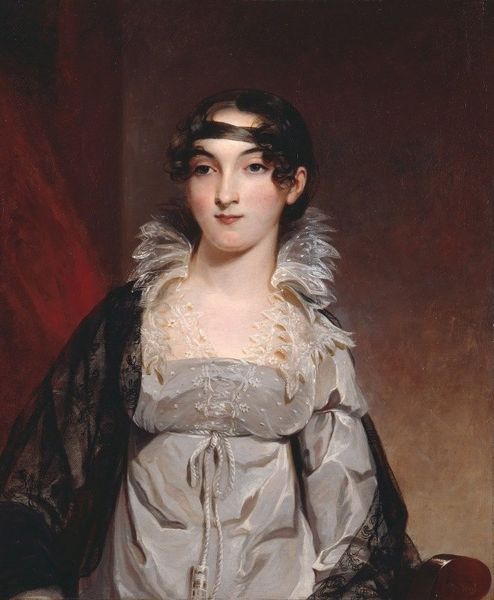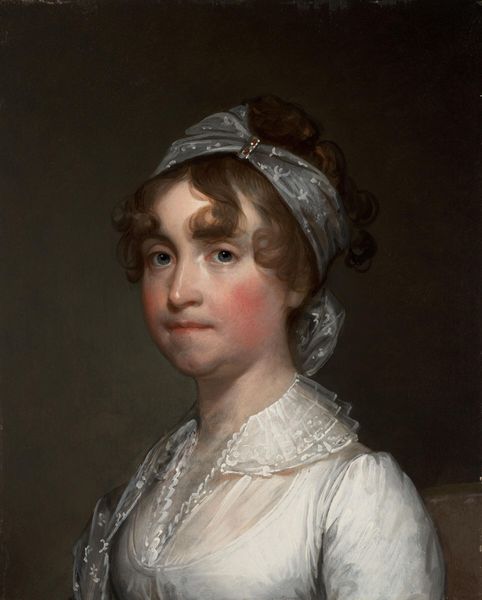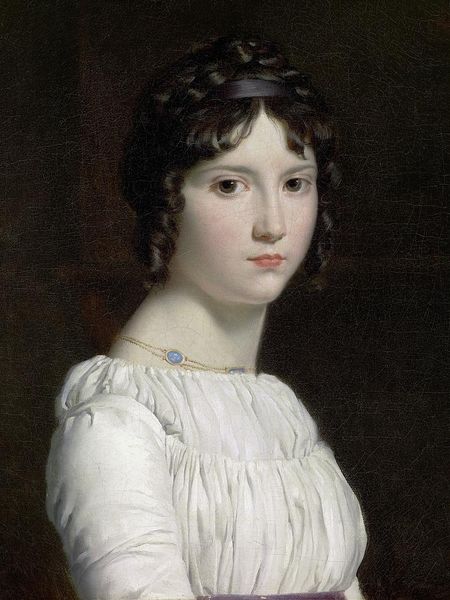
painting, oil-paint
#
portrait
#
painting
#
oil-paint
#
figuration
#
romanticism
Dimensions: overall: 61.3 x 46 cm (24 1/8 x 18 1/8 in.) framed: 77.2 x 64.5 x 7.3 cm (30 3/8 x 25 3/8 x 2 7/8 in.)
Copyright: National Gallery of Art: CC0 1.0
Curator: Sarah Blake Sturgis, an oil painting created around 1835 by Francis Alexander, presents a rather arresting figure. It’s a very traditional portrait, wouldn't you say? Editor: Yes, on the surface. My immediate sense is one of contained power, though. The direct gaze, the slightly pursed lips... there's a strength there that the Romantic style almost tries to soften, yet can't quite. I'm drawn to that tension. Curator: I see what you mean. Alexander was working within very specific social constraints, portraying women of a certain class. These images functioned to convey status and respectability, but sometimes…sometimes they leak hints of interiority. Editor: Exactly. Consider the context. Women’s roles in that period were so narrowly defined. This portrait, by portraying her individually, pushes at the edges of those confines. The turquoise colors that surround her face are, to me, an emblem of suppressed passions longing to escape. It also hints to how wealth might offer one freedom. Curator: The choice of that turquoise is certainly interesting, in relation to its history. It would've been quite a costly pigment, derived often from mineral sources. It's not just about status. Alexander knew his palette—these jewel-like colors evoke this sense of almost an otherworldly calmness. Editor: Agreed, there is something ethereal and distant about her. I read the choice of dress and adornment also as conscious construction of identity within social parameters. How might she negotiate social expectations while retaining a sense of self? It’s a powerful silent performance in my eyes. Curator: You are reminding us that these paintings aren’t simply documents. It can reflect her status but perhaps reveal also what she’s trying to present to society, something controlled and elegant, while possibly suggesting even revolutionary thought about her existence. Editor: Precisely! Looking at her more carefully and from a more political approach, I consider her resistance in her time, something that portraits usually disregard in favor of just beauty and good social standing. Curator: Ultimately, Alexander gives us a window into a specific time and social strata, revealing hints of the individual within. Editor: And it provokes a conversation on resistance, beauty and social power to be reassessed through this historical lens. I leave with this new perspective in mind.
Comments
No comments
Be the first to comment and join the conversation on the ultimate creative platform.
